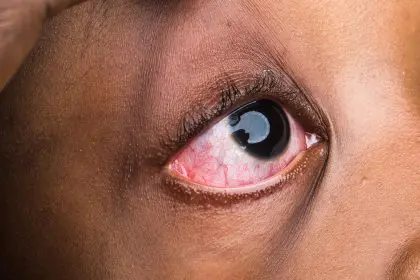Migraines affect millions of people worldwide, yet many still dismiss them as “just headaches.” Medical experts emphasize that migraines represent a complex neurological condition with far-reaching effects beyond head pain. Understanding this distinction proves crucial for proper treatment and management, as new research continues to reveal more about this debilitating condition.
Beyond the standard headache
Unlike typical headaches, migraines create a cascade of neurological symptoms that can disable sufferers for hours or even days. Recent research suggests that these episodes involve complex changes in brain chemistry and blood flow. The throbbing pain, often concentrated on one side of the head, represents just one aspect of a much larger neurological event.
The warning signs
Many migraine sufferers experience distinct warning signs before an attack begins. These early indicators, known as prodromes, can appear hours or even days before the actual headache phase. Some people report unusual food cravings, unexplained mood changes, or increased sensitivity to light and sound. Understanding these early warning signs allows sufferers to begin treatment sooner, potentially reducing the severity of the upcoming attack.
The mystery of auras
Approximately one-third of migraine sufferers experience auras, mysterious visual disturbances that often precede the headache phase. These visual phenomena can include flickering lights, zigzag lines, or blind spots in the field of vision. Some people report sensory auras, experiencing tingling sensations or numbness that typically starts in the fingers and spreads to the face.
The hormone connection
Women disproportionately suffer from migraines, with hormonal fluctuations playing a significant role. Changes in estrogen levels, particularly around menstruation, pregnancy, and menopause, can trigger attacks. This hormonal link helps explain why many women experience their first migraine during puberty and why the condition often improves after menopause.
Environmental influences
The modern world creates numerous challenges for migraine sufferers. Bright fluorescent lighting, constant screen exposure, and irregular sleep patterns can all trigger attacks. Changes in barometric pressure, common during weather shifts, represent another frequently reported trigger. Understanding these environmental factors helps sufferers create more migraine-friendly spaces at home and work.
The food factor
Dietary triggers vary significantly among individuals, but certain foods consistently appear as common culprits. Aged cheeses, processed meats, and foods containing MSG often trigger attacks in sensitive individuals. Alcohol, particularly red wine, and caffeine can also spark migraines in some people. However, the relationship between food and migraines proves complex, as the same foods that trigger attacks in some people may have no effect on others.
The stress connection
Stress remains one of the most commonly reported migraine triggers. The body’s stress response can cause blood vessels to constrict and release inflammatory substances, potentially triggering a migraine. This connection explains why many people experience “weekend migraines” when they finally relax after a stressful week.
Modern treatment approaches
Recent years have seen significant advances in migraine treatment. New medications specifically target the mechanisms behind migraine pain, offering more effective relief with fewer side effects. These treatments include both preventive medications taken regularly and acute treatments used during attacks.
The role of prevention
Prevention plays a crucial role in modern migraine management. This approach involves identifying and avoiding personal triggers while maintaining consistent daily routines. Regular sleep schedules, proper hydration, and stress management techniques all contribute to reducing migraine frequency.
Alternative therapies
Many sufferers find relief through alternative treatments. Acupuncture, biofeedback, and cognitive behavioral therapy show promise in reducing migraine frequency and severity. Some people report benefits from herbal supplements, though more research is needed to confirm their effectiveness.
The importance of sleep
Sleep patterns significantly influence migraine occurrence. Both too little and too much sleep can trigger attacks, making consistent sleep schedules crucial for prevention. Creating proper sleep hygiene habits, including regular bedtimes and wake times, helps regulate the body’s natural rhythms.
Exercise considerations
Regular physical activity generally helps prevent migraines, but exercise itself can sometimes trigger attacks. The key lies in finding the right balance and type of exercise. Low-impact activities like walking, swimming, or yoga often prove beneficial without increasing migraine risk.
The workplace challenge
Managing migraines at work presents unique challenges. Bright office lighting, computer screens, and workplace stress can all contribute to attacks. Creating a migraine-friendly work environment and communicating with employers about necessary accommodations helps maintain productivity while managing the condition.
Social impact
Migraines often affect social relationships and family dynamics. Plans get canceled, work responsibilities shift to others, and social isolation can occur. Understanding from family members and friends proves crucial for maintaining strong relationships while managing the condition.
Future treatments
Research continues to advance our understanding of migraines and potential treatments. New therapeutic approaches target specific neural pathways involved in migraine development. These advances offer hope for more effective treatments with fewer side effects.
Building a support system
Creating a comprehensive support system helps manage the physical and emotional impacts of chronic migraines. This system might include healthcare providers, family members, friends, and support groups where experiences and coping strategies can be shared.
The road to management
While no universal cure exists for migraines, various management strategies can sign















